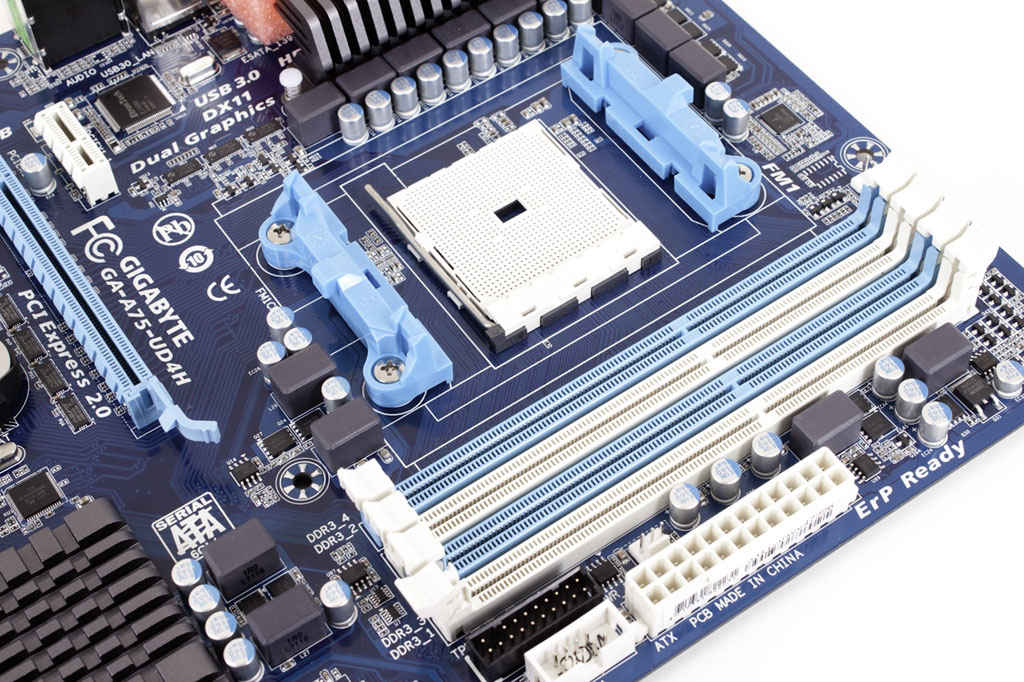Section 1 Subsystems
Memory -
Memory performance is very important on a motherboard, especially when you have a CPU with multiple cores and threads. If you have slow memory your cores and threads can become starved for data to execute. To test memory performance we run both Sisoft’s SANDRA and AIDA64. These two combine to not only give us accurate numbers but to validate each other. For testing at stock speeds the memory is hard set to 1600MHz while overclocking testing is done at the highest stable speed for the voltage of 1.65v this is due to the different memory dividers for each CPU. As such, the memory speeds will vary greatly. This means that the overclocked numbers are a little misleading and while they can show a trend are really only included to show if a board has a problem with memory performance at high clock speeds.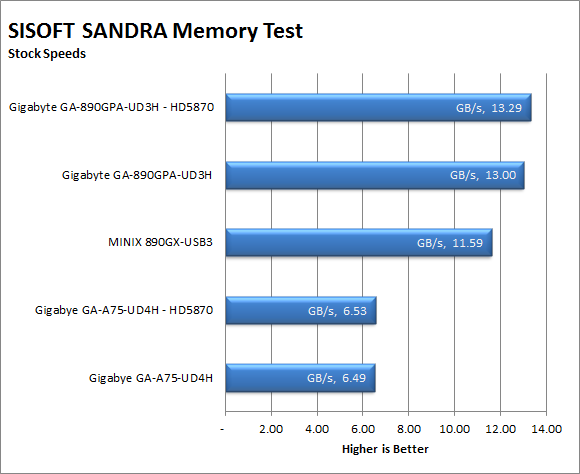
Hmmm, the memory performance here is quite a bit slower than the perceived performance would have hinted at. With Single digit memory bandwidth numbers we would have expected applications to crawl especially when we opened multiple windows. However, this was not the case. I would still be a little concerned about running any memory intensive application on this board though.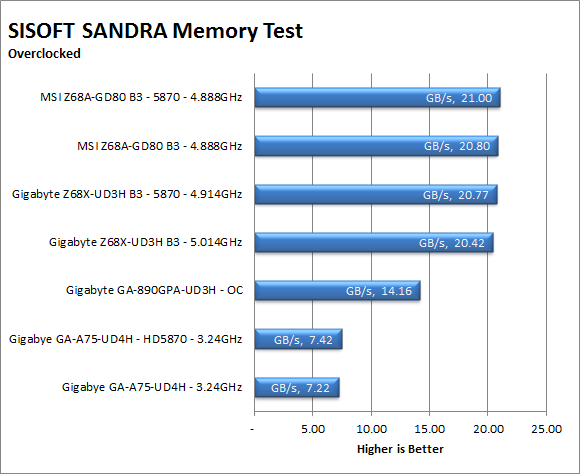
The AIDA64 numbers tell the rest of the story. The IMC on the Llano just does not have the same potential bandwidth as other more mainstream CPUs. It does more than keep up when compared to CPUs like the Atom though.
| AIDA64 Stock Speeds | AIDA64 Overclocked |
 |
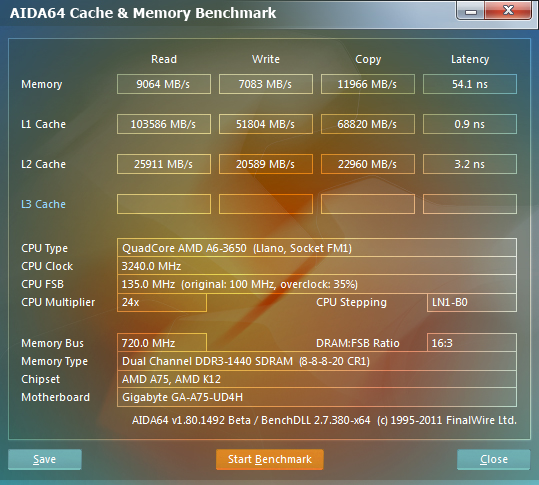 |
Drive performance -
Drive performance is also one of the major subsystems that goes to make up the performance of a motherboard. For our testing we use Sandra and AIDA64 again. We only test with single drives for each type of controller present on the motherboard (unless it is a professional product where we will use RIAD 5 and/or 10). We have also begun using a Seagate PS-110 USB 3 external HDD for our USB 3.0 performance. As a side note, we include the overclocked numbers here to make sure (again) that you are not going to see a major drop in performance due to minor instabilities at high clock speeds.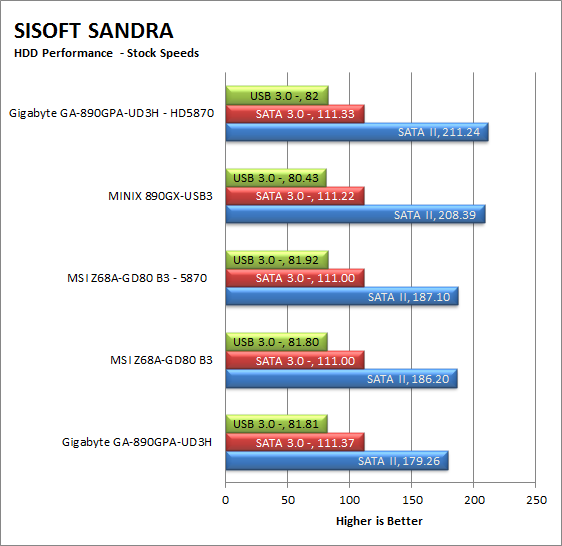
HDD speeds were right on par with the rest of the competition. We would expect to see good installation times and also application load times with this type of performance (unless the installer loads entirely to memory…). 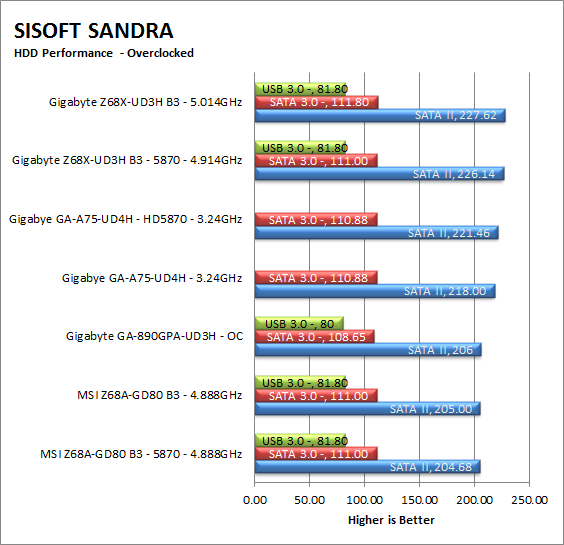
| AIDA64 HDD Performance Stock | AIDA64 HDD Performance Overclocked |
 |
 |
Power -
Power efficiency is another of those misnomers that we get caught up in. We hear about idle states and power gates. But what does that mean to you and I? On the surface having power management that reduces idle power sounds great and can be a benefit to someone that leaves their system on for long periods of time (and inactive) but how a system handles power under load and the delta between the two states is often more important than the idle power usage numbers. We use only P3 Kill A Watt instruments for measuring power. 
As you might expect the power draw on the A75 was not that high. In fact we found that at idle the average power was almost half of some of the other boards in our test group. With this type of idle power draw this would make a great “always-on” system like and HTPC or DVR for surveillance cameras. It is not going to push your power bill over the top but will still have enough power to do what you need it to.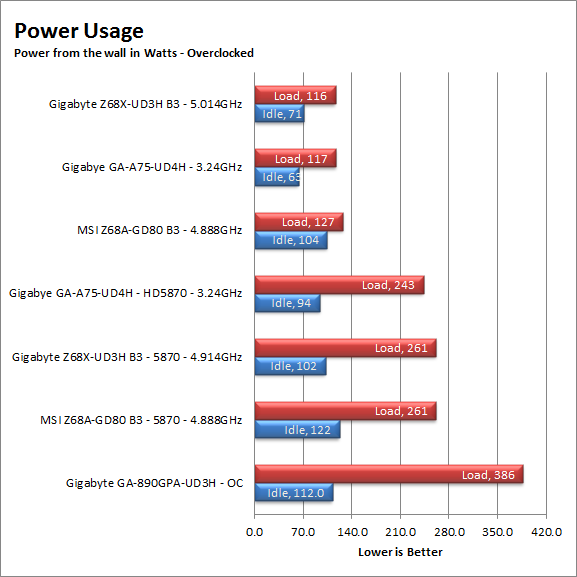
Cooling (Board Level) -
Board level cooling is an important factor in product performance and longevity. Components like the chipset, VRM modules and even capacitors need to be kept relatively cool to prevent failure. As these parts are made of silicon, they have a thermal breakdown threshold; or melting point. At that temperature the actual transistors built into chip will begin to deform and break down. Granted, the threshold is often very high, but you still need to make sure that components stay away from this level of heat for longer product life. 
The cooling on the A75-UD4H was not as good as I would have hoped. In comparison it is cooler than the AMD 890FX boards we tested but not quite as cool as many of the Intel Z68 boards in the group. 
Audio -
Audio is highly subjective. What we find pleasing may sound “off” to you. That is always going to the problem with testing audio; results will vary too widely depending on the tastes of the listener. However, there are ways of measuring the audio output with an objective ear. There is also the issue of audio causing performance issues in gaming and video playback. The reason this is a potential source of concern is that all onboard audio CODECs (Compression/Decompression) are CPU controlled. This means that while the audio chip controls the audio levels and effects of the audio the actual work is done on the CPU. Usually this will not be a problem with today’s powerful CPUs. Even the lower and consumer level products can handle high-end audio these days. But again there is the chance that a bad design or software will hinder your system and performance. On the other side the limits of board space, cost, etc will also prevent the level of audio quality you can get from an add-in board. We test all audio parts with three media types, Movie (DVD), MP3 Music, and Gaming. These are pushed to our Tec On model 55 Tube Amp to see if we can detect any signal issues in the reproduction.
Gigabyte is advertising “Super Audio” on this board. For you and me that means the Audio CODEC is able render audio at a 108db Signal to Noise Ratio. This puts it right in the realm of “HD” quality audio. Now for many this is just numbers again, so we will put it plainly (and VERY simply). For every decibel of noise that the audio processor generates you get 108db of audio output. Considering that most people will never listen to their audio at that volume you are not going to get any recognizable noise from this Audio Codec. This again makes the A75-UD4H very suitable for an HTPC system, especially if you combine this with the right speakers and other hardware.
Networking -
This one is something that is a requirement anymore. If you have a computer, the chances are good (like 99%) that you are also connected to high-speed internet. With this you need a good and solid LAN chip to make sure that your data flows properly out and back.
The networking performance was also very solid. Again you are not going to win any speed awards, but you can certainly get your data back and forth across the network and the internet. Then again, when you consider than even the fastest residential internet connection right now is not over 100MB/s you do have plenty of headroom to play around with.

